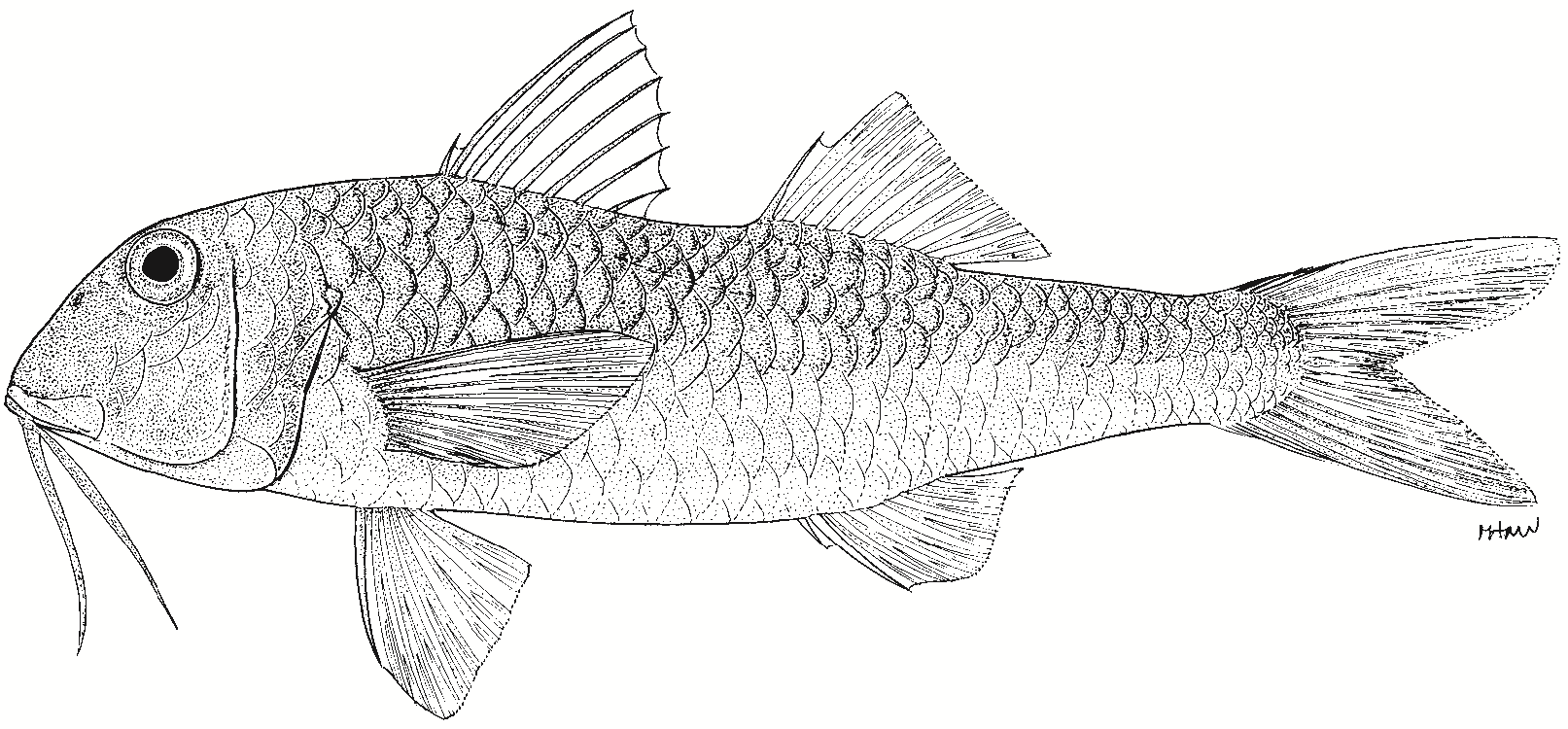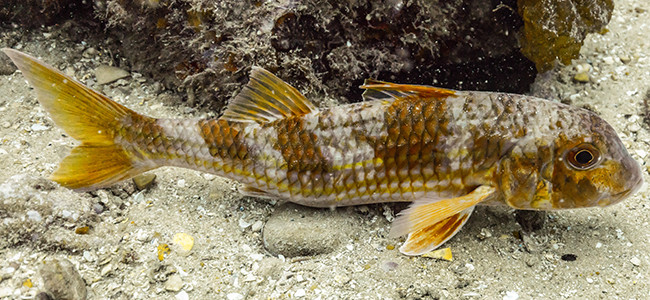Mullus barbatus, commonly known as the red mullet or mud mullet, is a fish species belonging to the family Mullidae. Its scientific name comes from Latin: ‘Mullus‘ meaning mullet, and ‘barbatus‘ referring to the distinctive barbels on its chin, which it uses to search for food on the seabed. This species is highly valued in commercial fishing due to its flavor and abundance in its distribution areas. Mullus barbatus inhabits the Mediterranean Sea, the Black Sea, and the northeastern Atlantic, ranging from the southern coasts of Norway down to Senegal. It prefers sandy and muddy bottoms at depths between 10 and 300 meters, though it is more commonly found between 20 and 100 meters.

The red mullet has an elongated and somewhat laterally compressed body, generally measuring between 15 and 25 cm, but it can reach up to 30 cm. Its body is covered with small scales, and its coloration is pinkish or reddish with silvery reflections, giving it a bright and distinctive appearance. The barbels under its jaw are one of its most notable features, serving to detect prey in the sediment of the seabed. It has two dorsal fins: the first, composed of spiny rays, is shorter, while the second is longer and soft. A similar species is Mullus surmuletus (the striped red mullet), which shares many morphological characteristics. However, Mullus barbatus can be distinguished by the absence of longitudinal yellow stripes on its sides, which are present in Mullus surmuletus.
Mullus barbatus feeds mainly on small benthic invertebrates found in the sediment of the seabed. It uses its sensitive barbels to detect and uncover prey such as crustaceans, bristle worms, small molluscs, and other marine organisms. It is an opportunistic hunter whose diet varies depending on the type of seabed where it lives, adapting to the available food sources. Its feeding habits in muddy bottoms make it an important component of the benthic ecosystem, helping to maintain the balance in invertebrate communities.
Reproduction of the red mullet generally occurs in spring and summer, depending on the geographic area and environmental conditions. It is an oviparous species with external fertilization; females release large quantities of pelagic eggs into open water, which float until hatching. Larvae are planktonic during their early life stages, dispersing with currents until they develop enough to settle on the seabed as juveniles. No parental care is observed in this species, and both eggs and larvae are vulnerable to predation.
An interesting fact about Mullus barbatus is its historical importance in Mediterranean cuisine, where it has been considered a delicacy since Roman times. The Romans prized the mullets so highly that they competed to have the largest and most colorful specimens at their banquets. Today, it remains a highly valued species in commercial and recreational fishing, especially in the Mediterranean, where it is sought after for its delicate, mild-flavored meat. Due to its economic value, its fishing is regulated in many areas to prevent overexploitation and ensure population sustainability.
Photos:

